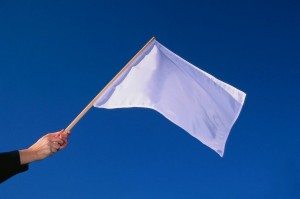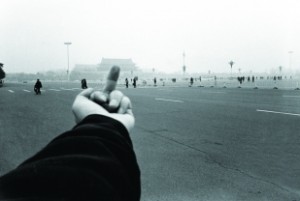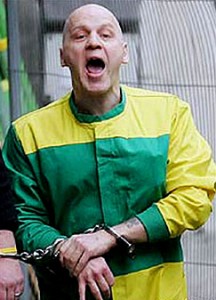 While on my morning stroll to the nearby Espresso Bar, I encountered this poster near my home. I quite like it. You see, generally, artists–particularly graffiti artists–tend to get copyright law all wrong. However, this young chap–or gal–got it right: ideas are free. Copyright law doesn’t protect ideas, but merely the fixation (materialization) of those ideas. God bless Williamsburg dissidents.
While on my morning stroll to the nearby Espresso Bar, I encountered this poster near my home. I quite like it. You see, generally, artists–particularly graffiti artists–tend to get copyright law all wrong. However, this young chap–or gal–got it right: ideas are free. Copyright law doesn’t protect ideas, but merely the fixation (materialization) of those ideas. God bless Williamsburg dissidents.
Will textualism save our copyright planet? Warhol Fdn v. Lynn Goldsmith headed to SCOTUS
Images of Goldsmith and Warhol at issue. The U.S. Supreme Court will review a ruling that an Andy Warhol print infringed a copyrighted photograph taken by photographer, Lynn Goldsmith, of the late musician, Prince. We certainly hope--as much as one can hope for anything these days--that SCOTUS cleans up the wasteland that has become of "fair use" interpretation. One would think, and hope I suppose, that with many of the sitting justices adhering to textualism, they will fully jettison the nonsensical "transformativeness" test that has plagued us like a really bad case of Covid since the mid-1990s. Docs here, via ...


Podcast: Stephanie Drawdy and Sergio Munoz Sarmiento on All Things Art and Law
Ahh...Youth! Sergio Munoz Sarmiento. (2015 - ongoing), C-Print. © and TM Sergio Muñoz Sarmiento. All rights reserved. I had a lovely conversation with fellow lawyer and artist, Stephanie Drawdy, on the NFT craze, pets, art law, and the origins of The Art & Law Program. You can listen to the Podcast here. Hope you enjoy!
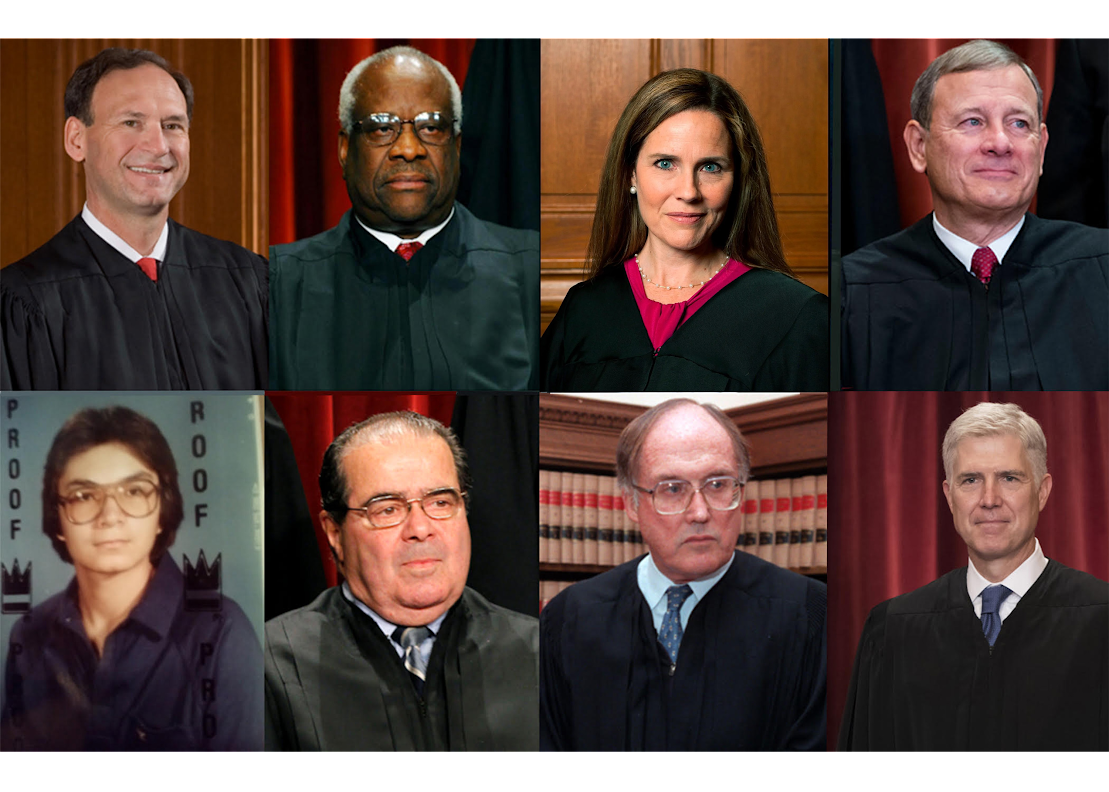

Marcel Duchamp archives now online, free of charge
The Philadelphia Museum of Art, the Centre Pompidou, and the Association Marcel Duchamp have digitized their vast archives of material on the Dadaist and placed it online, where it is free to all. Enjoy!
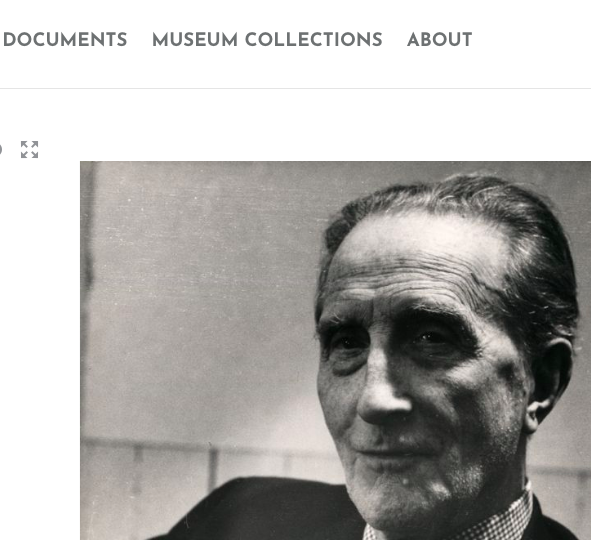

The Art & Law Coloring Book
If you have kids at home and want them to do something fun and educational, try the Art & Law Coloring Book, an ongoing project by The Art & Law Program. Really a great collection of drawings by great artists, including: Emma Jane Bloomfield Damien Davis Molly Dilworth João Enxuto Soda Jerk Clare Kambhu Alexandra Lerman Erica Love Douglas Melini Sergio Muñoz Sarmiento Melinda Shades Elisabeth Smolarz Gabriel Sosa Alfred Steiner Valerie Suter Happy coloring!


What are NFTs and what does it mean to own one?
If you're confused as to what the hell NFTs are, particularly art NFTs, here's a new article by Alfred Steiner that pretty much walks you through and safely out of the NFT hell. In his article, Steiner explains what NFTs are and what it means to own one. He also discusses why that meaning of ownership—which may appear novel to many—isn’t new at all when considered against the backdrop of the market for conceptual art. Steiner concludes with some observations about how NFTs may be good and bad for the art industry.


H. Brian Holland, Associate Professor of Law at Texas Wesleyan School of Law, is publishing Social Semiotics in the Fair Use Analysis in a forthcoming issue of the Harvard Journal of Law and Technology. I haven’t had time to read it yet, but here’s a bit from the abstract.
This article presents an argument for an expansion of fair use, based not on theories of authorship or rights of autonomy but rather on a theory of the audience linked to social practice. The article asks, in essence, whether audiences determine the meaning, purpose, function, or social benefit of an allegedly infringing work, often regardless of what the work’s creator did or intended. If so, does this matter for the purpose of a fair use analysis based on a claim of transformativeness?
You may access the article here.
It’s bad enough that we’re going through a remake of the Jimmy Carter years, and that last night the BCS gave us a boring “championship” between two dismal and B-rate football teams (read: no Texas, Alabama, or Florida). Tonight we get another snoozer.
Reports just in indicate that the much anticipated legal battle between Shepard Fairey and the Associated Press has come to one limp conclusion.
A judge has dismissed copyright lawsuits between an artist who created the Barack Obama “HOPE” image and The Associated Press but has left a March trial date in place for related claims between the news service and companies that sold merchandise using the artist’s image.
U.S. District Judge Alvin Hellerstein said in a one-page order publicly filed Tuesday that a “suggestion of settlement” led him to dismiss claims between artist Shepard Fairey and the AP. He said the claims could be reinstated within a month if either side requested it.
UPDATE: January 12, 2011
The AP has just released a statement concerning their “pending” settlement.
Press Release
AP and Shepard Fairey announce agreement in Obama poster case
The Associated Press, Shepard Fairey and Mr. Fairey’s companies Obey Giant Art, Inc., Obey Giant LLC, and Studio Number One, Inc., have agreed in principle to settle their pending copyright infringement lawsuit over rights in the Obama Hope poster and related merchandise.
Mr. Fairey used an AP portrait photograph of Mr. Obama in making the Hope poster. Mr. Fairey did not license the photograph from the AP before using it. The AP contended that Mr. Fairey copied all of the original, creative expression in the AP’s photograph without crediting or compensating the AP, and that Mr. Fairey’s unlicensed use of the photograph was not a fair use. Mr. Fairey claimed that he did not appropriate any copyrightable material from the AP’s photo, and that, in any event, his use of the photograph constituted a fair use under copyright law.
In settling the lawsuit, the AP and Mr. Fairey have agreed that neither side surrenders its view of the law. Mr. Fairey has agreed that he will not use another AP photo in his work without obtaining a license from the AP. The two sides have also agreed to work together going forward with the Hope image and share the rights to make the posters and merchandise bearing the Hope image and to collaborate on a series of images that Fairey will create based on AP photographs. The parties have agreed to additional financial terms that will remain confidential.
“The Associated Press is pleased to have reached resolution of its lawsuit with Mr. Fairey,” said Tom Curley, president and CEO. “AP will continue to celebrate the outstanding work of its award-winning photographers and use revenue from the licensing of those photos to support its mission as the essential provider of news and photography from around the world. The AP will continue to vigilantly protect its copyrighted photographs against wholesale copying and commercialization where there is no legitimate basis for asserting fair use.”
“I am pleased to have resolved the dispute with the Associated Press,” said Mr. Fairey. “I respect the work of photographers, as well as recognize the need to preserve opportunities for other artists to make fair use of photographic images. I often collaborate with photographers in my work, and I look forward to working with photos provided by the AP’s talented photographers.”
The AP’s copyright infringement lawsuit against Obey Clothing, the marketer of apparel with the Hope image, remains ongoing.
For more information, contact:
Paul Colford /Jack Stokes
Media Relations
The Associated Press
212.621.1720
In her article, Whitewashing the Art World: What’s Behind the Climate of Censorship, the New York Observer’s Alexandra Peers tackles the issues of censorship and silencing that seem to be all-too-pervasive.
The art world has a reputation as free-thinking and tolerant, if not overly so. But in recent weeks, there have been several instances, far more than usual, of alleged censorship involving some of the bigger names in the field. What’s going on?
Charles Gaines has also written about this very same issue, and so have I.
What is going on?
Here’s a great example as to how anything can be art and yet still be illegal.
A court struck down an appeal by Belfast’s most notorious militant to overturn his convictions on Thursday, dismissing claims he only brought weapons to parliament as props for a piece of performance art.
Michael Stone carried an array of weapons to parliament in 2006, including an ax, three knives, a strangulation cord, seven homemade grenades and a small bomb. He claimed all of them were props in a cutting-edge piece of performance art and he had no intention to kill anyone.
Via The Seattle Times. Some analysis on this here.
The essay below, Free Speech and Property Rights: Censorship in the Arts, was written by artist and educator Charles Gaines, in response to the recent events concerning artistic speech at the National Portrait Gallery, the Museum of Contemporary Art in Los Angeles, and the Gagosian Gallery in New York City. In this essay, Gaines explains how artists, art media sources, and art institutions should combat the silencing of artistic expression through means other than law. The reader will notice that we have included the short version on the front page of this website, and the longer version below.
Gaines has graciously agreed to publish his essay with Clancco.com, with the hope of using his essay as a petition statement from artists, writers and art viewers to be sent to museums and galleries. In this light, we hope you will sign-on to this petition. You may access the petition form and list here.
—————————————–
Free Speech and Property Rights: Censorship in the Arts (short version)
-Charles Gaines, January 2011
- Freedom of speech: an idea that government cannot censor or punish you because of your expressed opinion. The problem today is that it is not only government but also institutions such as corporations, museums, and galleries that are involved in censoring speech.
- When the National Portrait Gallery at the Smithsonian removed David Wojnarowicz’s work from its show Hide and Seek, and the Museum of Contemporary Art in Los Angeles painted out Blu’s anti-war mural, artists and others who have an interest in free speech protested. But in this protest we find two separate interests: one, art as a humanistic discipline, that when coupled with freedom of speech gives us the capacity to realize our full potential as human beings, and two, our interest in protecting property, which points to questions concerning the ownership of works of art. We understand that as artists we speak through the objects we produce and we believe we own that speech even if someone else owns the object.
- Artists and institutions are increasingly using law as a weapon to protect free speech. But they are beginning to realize that this action is actually contributing to the demise of art. As in the Mass MoCA v. Buchel case, these aggressive legal maneuvers and lawsuits are affirming more and more that art has to be considered property in matters of free speech, and this moves the idea of art away from philosophical or moral principles into one of property rights.This brings the realization that the law cannot resolve this alone.
- The alternative solution is to fight these patterns of censorship through political organizing. We will follow the example of the civil rights movement and come together to make our arguments to museums such as the Smithsonian and MOCA, and galleries such as Gagosian on moral and ethical grounds and not rely only on law. In this way we can fight for principles we deem important even if not protected by law..
- We understand the deeply troubling problems the recent events around free speech and censorship have raised. We ask that our institutions of art demonstrate their understanding of this and rethink their relationship to art and artists, and to consider the damage censorship and the silencing of speech does.
- We understand that the law negotiates the idea of art in terms of property rights, and if we only use the law as a tool to fight censorship or protect property rights, we will only intensify the present trend of art as commodity. This undermines what is important about art: that it expands our knowledge, deepens our understanding, and enriches our experiences. Art has a long history of contributing to our social, cultural, and political lives and this history should not be negated by actions that oppress the free exploration of ideas. We will use negotiation as the means to influence institutional practices around censorship in order to preserve these things that make art important to society. We ask our institutions to do the same, to look beyond their legal rights as autonomous agencies and help us protect the idea of art.
- We ask our institutions to make public declarations and include in their mission statements language that demonstrates their commitment to free speech and anti-censorship policies. We ask for this to preserve art and its legacy.
-Charles Gaines
You may access the petition form and sign-up list here.
To see a list of those who have signed the list, please click here.
Clancco, Clancco: The Source for Art & Law, Clancco.com, and Art & Law are trademarks owned by Sergio Muñoz Sarmiento. The views expressed on this site are those of Sergio Muñoz Sarmiento and of the artists and writers who submit to Clancco.com. They are not the views of any other organization, legal or otherwise. All content contained on or made available through Clancco.com is not intended to and does not constitute legal advice and no attorney-client relationship is formed, nor is anything submitted to Clancco.com treated as confidential.
Website Terms of Use, Privacy, and Applicable Law.
